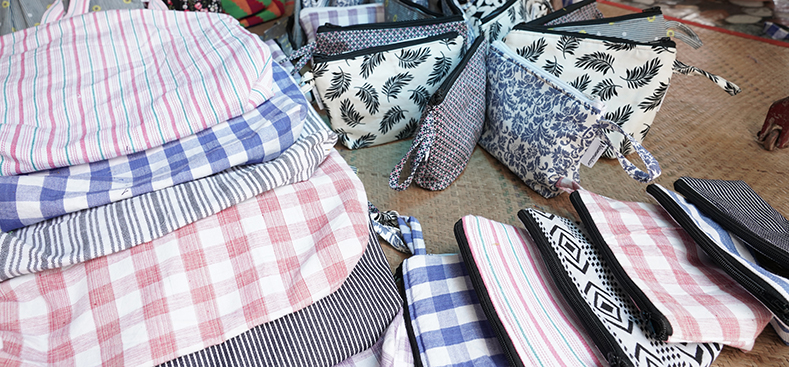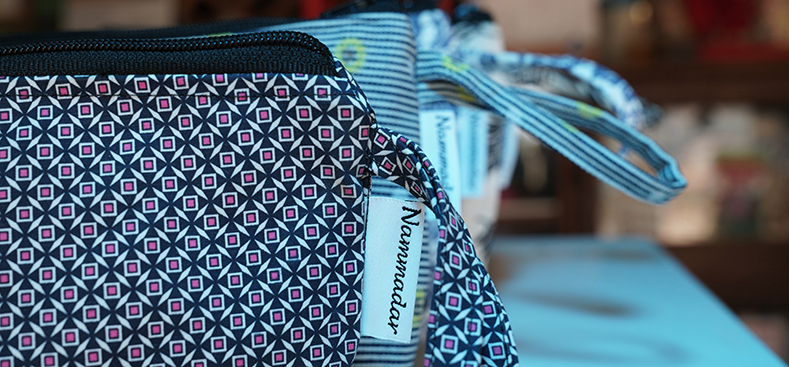Success stories from communities surrounding Mann Field will tell you how we are impacting their lives and how we are creating value together through our co-existence for local small holder farmers and women’s groups.
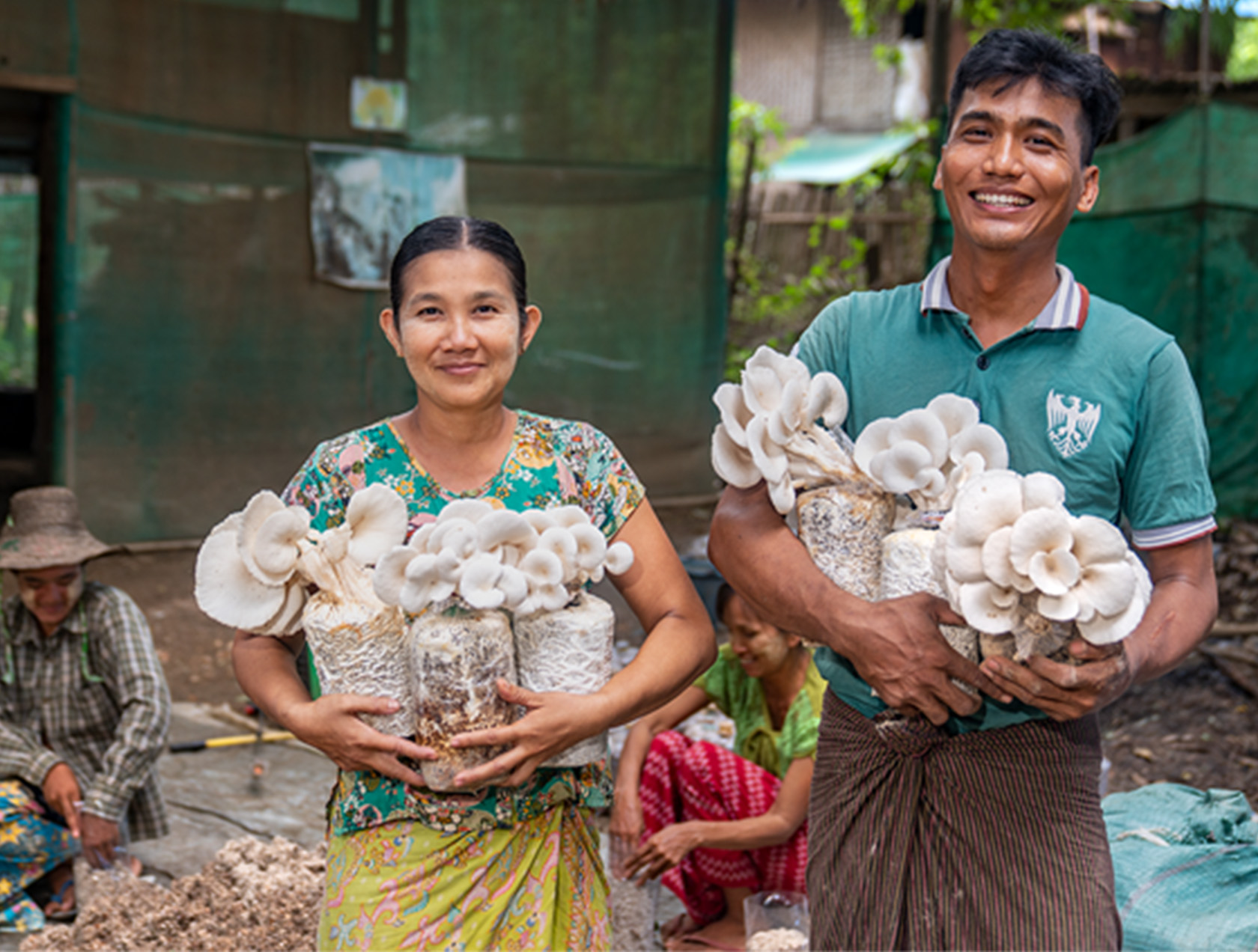
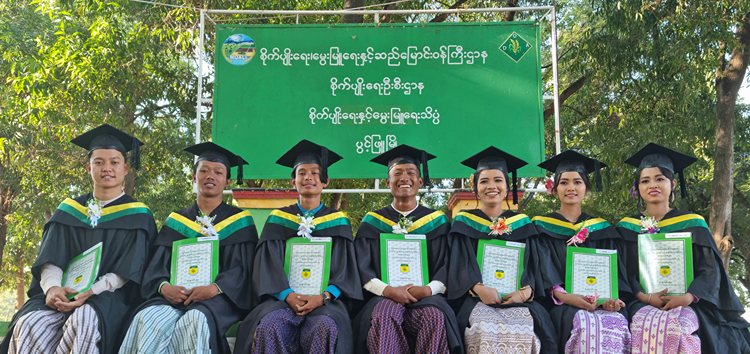
How MPRL E&P’s CSR Scholars Are Shaping Their Futures
Seven students from Mann Field have blossomed into promising agricultural professionals, a testament to their hard work and the transformative power of MPRL E&P’s CSR Program. In the Fiscal Year 2022-2023, MPRL E&P’s CSR Program provided scholarships to seven students from Mann Field, enabling them to pursue their education at the State Agriculture and Livestock Institute (SALI-Pwint Phyu). With dedication and perseverance, all seven scholars—four men and three women—successfully passed their third-year final exams in 2024 and officially graduated with a Diploma in Agriculture on 10 January 2025.
Read moreHow MPRL E&P’s CSR Scholars Are Shaping Their Futures Seven students from Mann Field have blossomed into promising agricultural professionals, a testament to their hard work and the transformative power of MPRL E&P’s CSR Program. In the Fiscal Year 2022-2023, MPRL E&P’s CSR Program provided scholarships to seven students from Mann Field, enabling them to pursue their education at the State Agriculture and Livestock Institute (SALI-Pwint Phyu). With dedication and perseverance, all seven scholars—four men and three women—successfully passed their third-year final exams in 2024 and officially graduated with a Diploma in Agriculture on 10 January 2025.


Following their graduation, the scholars shared their academic experiences, current endeavors, and future aspirations in an interview. Here are their reflections:
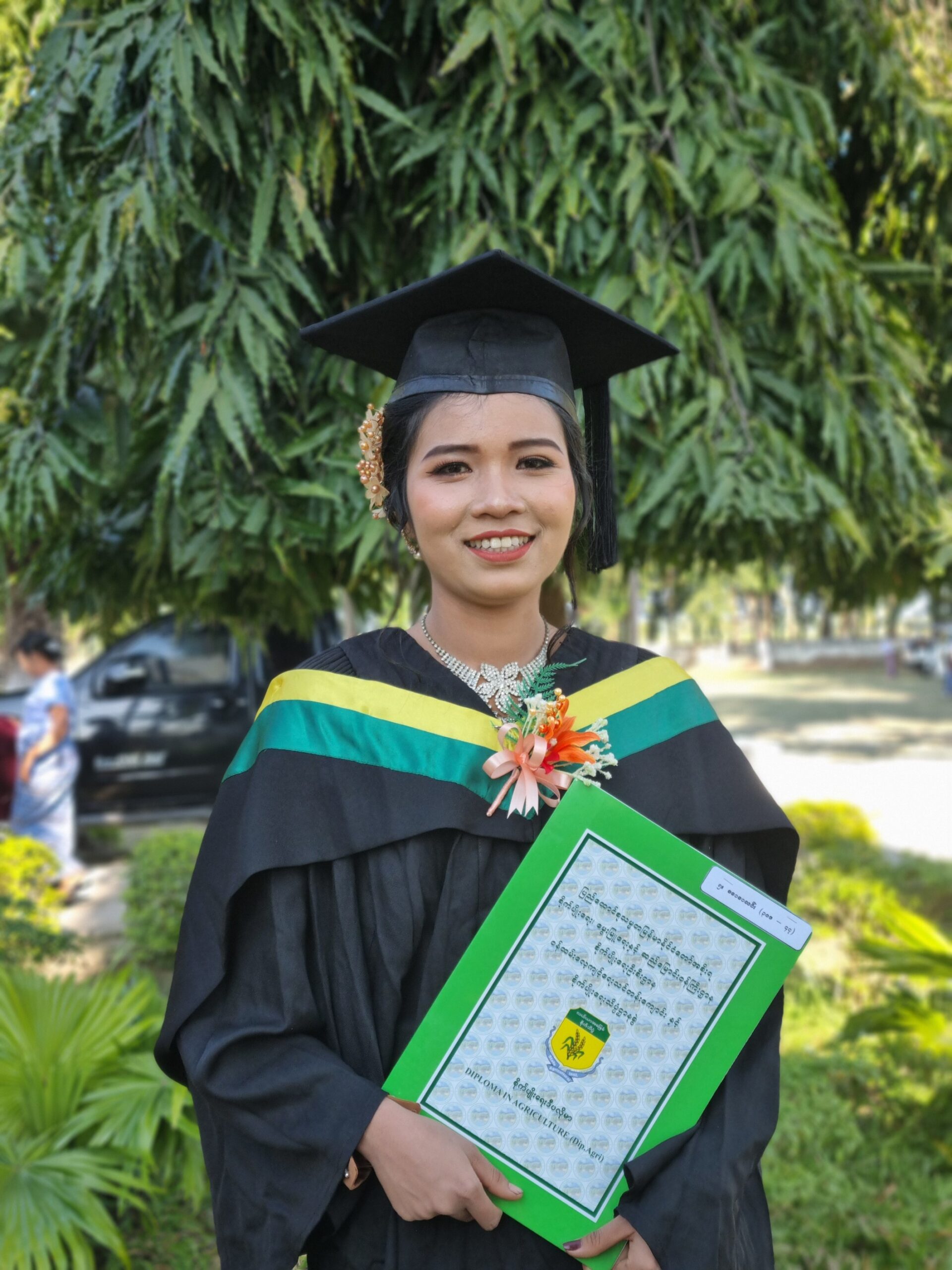
Wai Wai Linn
“Among the seven scholarship recipients, Ma Chit Hnin Phyu and I achieved the required grades for Yezin Agricultural University and will sit for the entrance exam in October 2025. To prepare, I am reviewing past exam papers, seeking guidance from my teachers, and compiling study materials. If accepted, I am particularly interested in studying entomology and plant pathology. I am immensely grateful to MPRL E&P for their support throughout my educational journey and to my teachers at the institute for their invaluable guidance.”
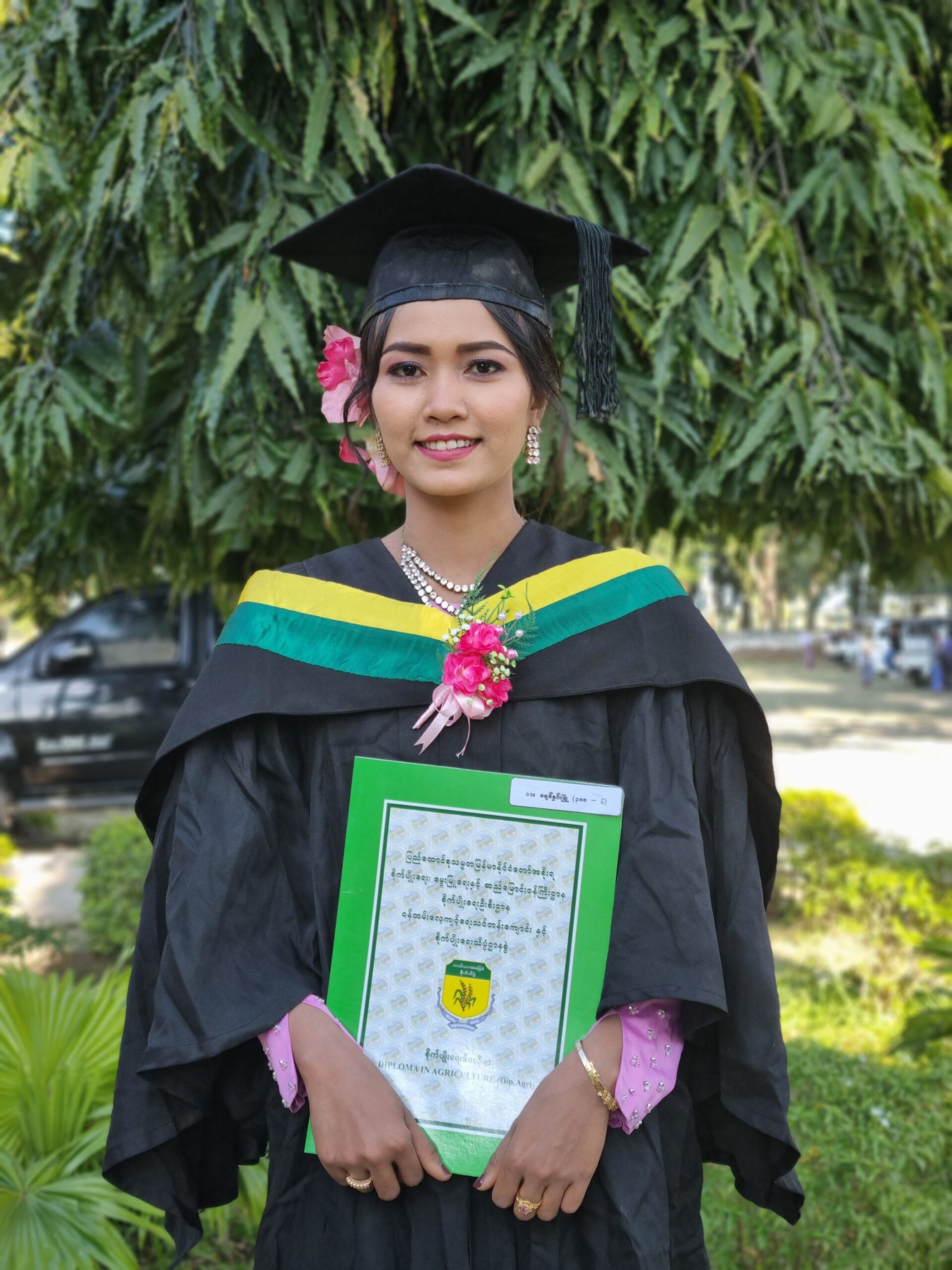
Chit Hnin Phyu
“With MPRL E&P’s scholarship support, we earned a Diploma in Agriculture. My next goal is to pass the entrance exam for Yezin Agricultural University. If successful, I will enroll in the third-year undergraduate program in November 2025, leading to a Bachelor of Agricultural Science degree after three additional years of study. To future scholars from Mann Field, I encourage you to study hard and appreciate the scholarship opportunity provided by MPRL E&P—it is a stepping stone to a brighter future.”
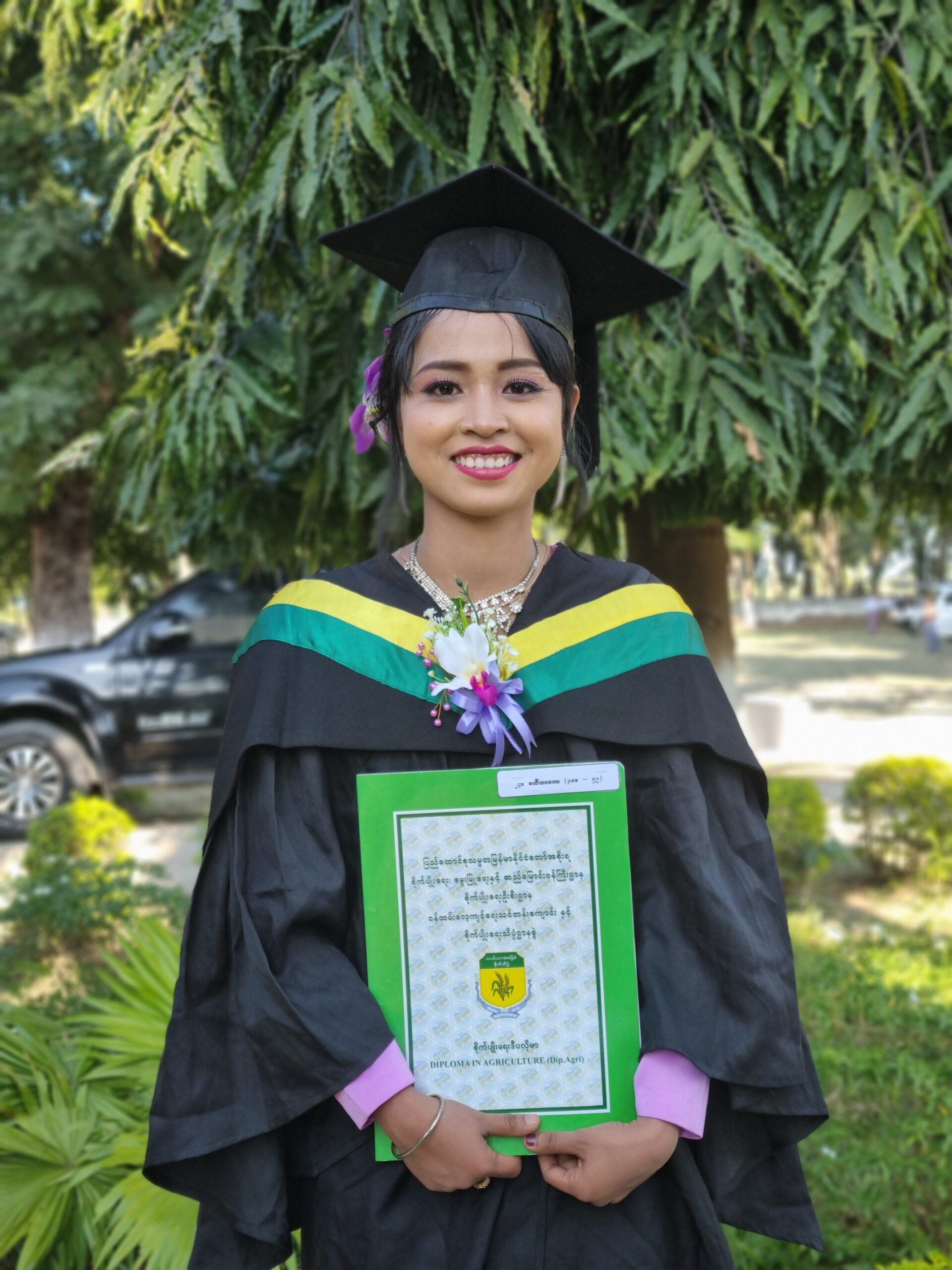
Thida Aye
“I am truly grateful to MPRL E&P and SALI (Pwint Phyu) for their support. Over the past three years, I have experienced remarkable personal growth—not only in agricultural knowledge but also in social skills. The knowledge I have gained is both theoretical and practical, enabling me to share insights with local farmers. Now that I have earned my diploma, my next step is to pursue further education and secure a job in the agricultural sector.”
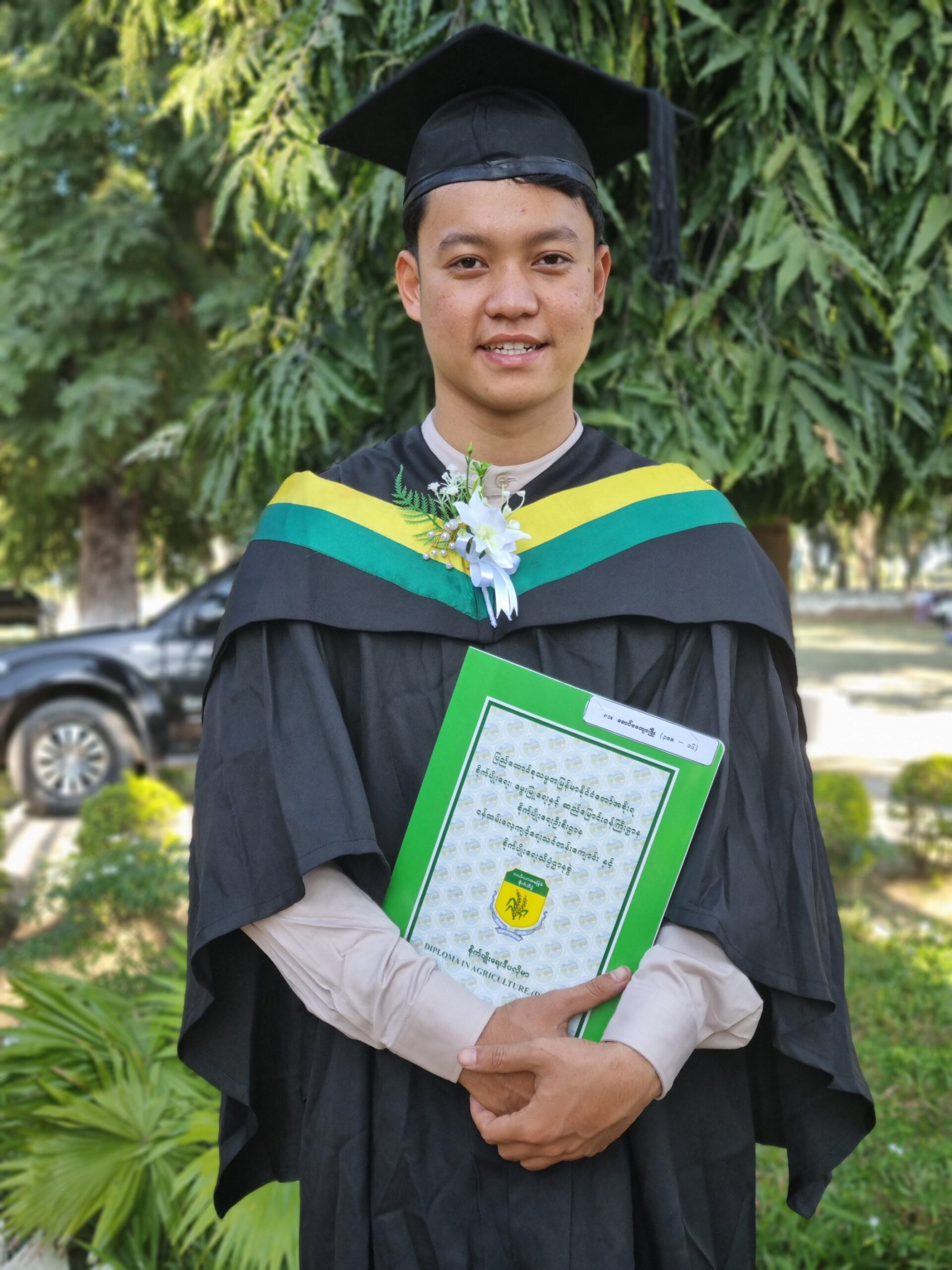
Zayyar Phyo
“At the institute, we gained valuable hands-on experience in growing various crops through fieldwork. Based on my experience, I highly recommend this institute to young men from Mann Field under MPRL E&P’s scholarship program. Graduating from this school significantly enhances job prospects—it is like having a meal ticket in hand. I am deeply grateful to MPRL E&P for their support in helping me obtain this opportunity. Currently, I am attending a Japanese language school and plan to work in Japan, applying my agricultural knowledge.”
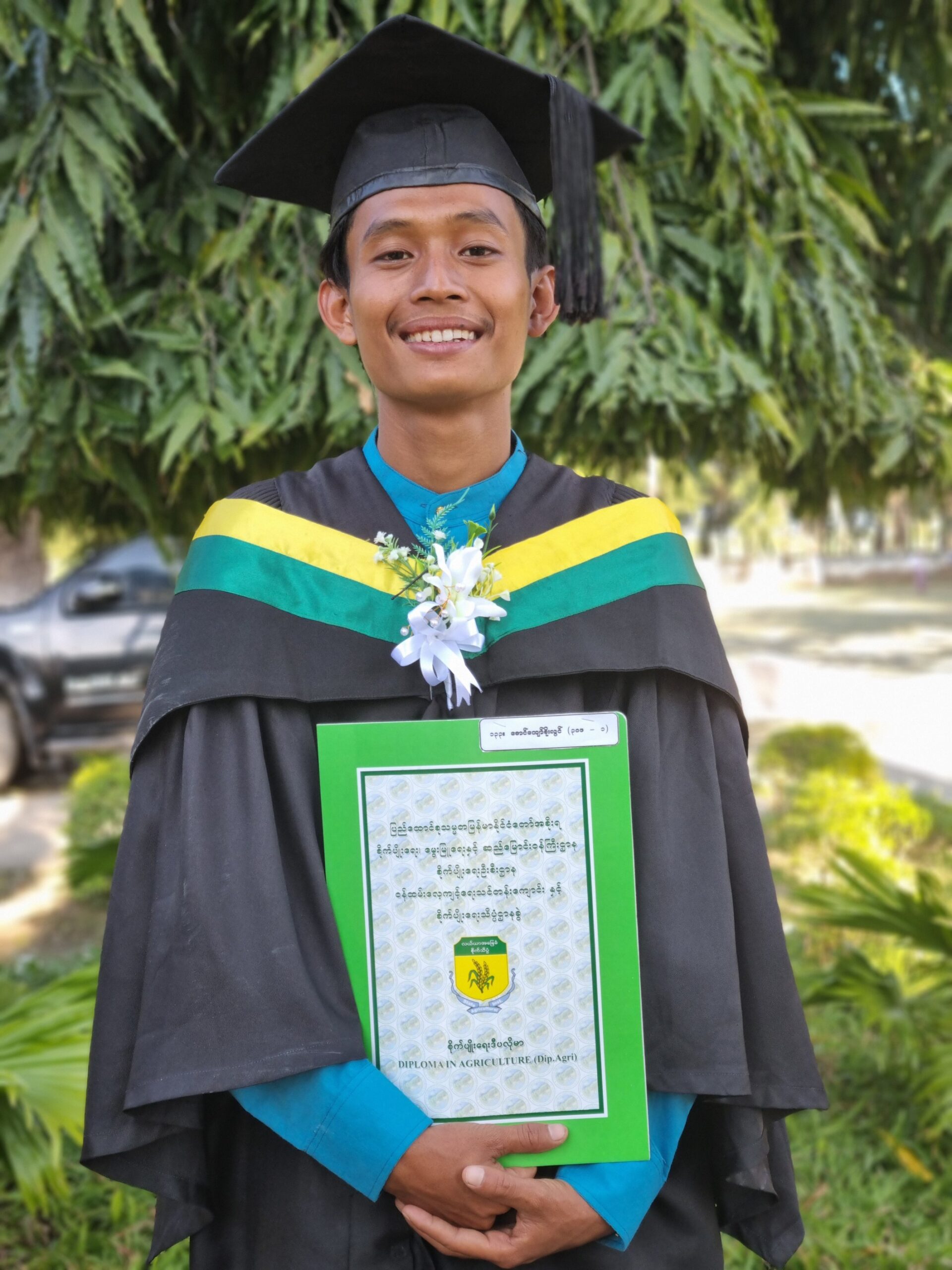
Kyaw Soe Lwin
“We received MPRL E&P’s scholarship from our first year through graduation, which greatly supported our studies. Thanks to this, all seven of us found it relatively easy to transition into the workforce. Currently, I work at Mingalar Hinthar Company, where my responsibilities include distributing agricultural products to farmers, providing field prescriptions, and conducting practical work at the company’s experimental farms. My education made it easier to communicate with farmers and apply my knowledge. Once I gain more experience and capital, I plan to open my own agricultural supply store.”
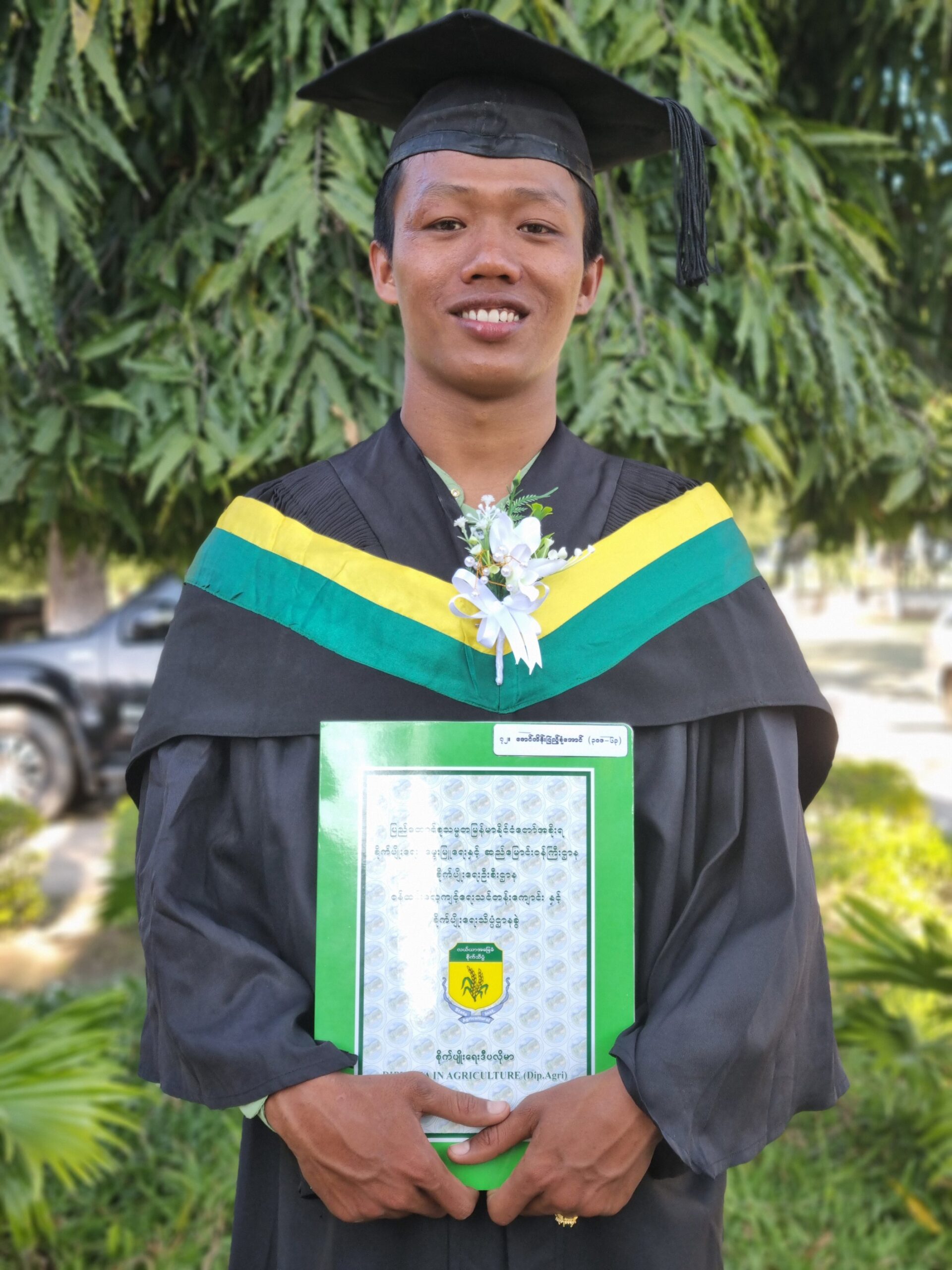
Hein Pyae Sone
“Job opportunities for graduates from the State Agriculture and Livestock Institutes are quite promising. I chose to work at Mingalar Hinthar Company, where I serve as a field staff member. MPRL E&P’s scholarship has been a game-changer for young people like us who faced financial challenges in continuing education. The institute’s group learning approach has been particularly beneficial in my professional fieldwork. I am grateful for the support from MPRL E&P and the education provided by the institute, which has made my career path smoother.”
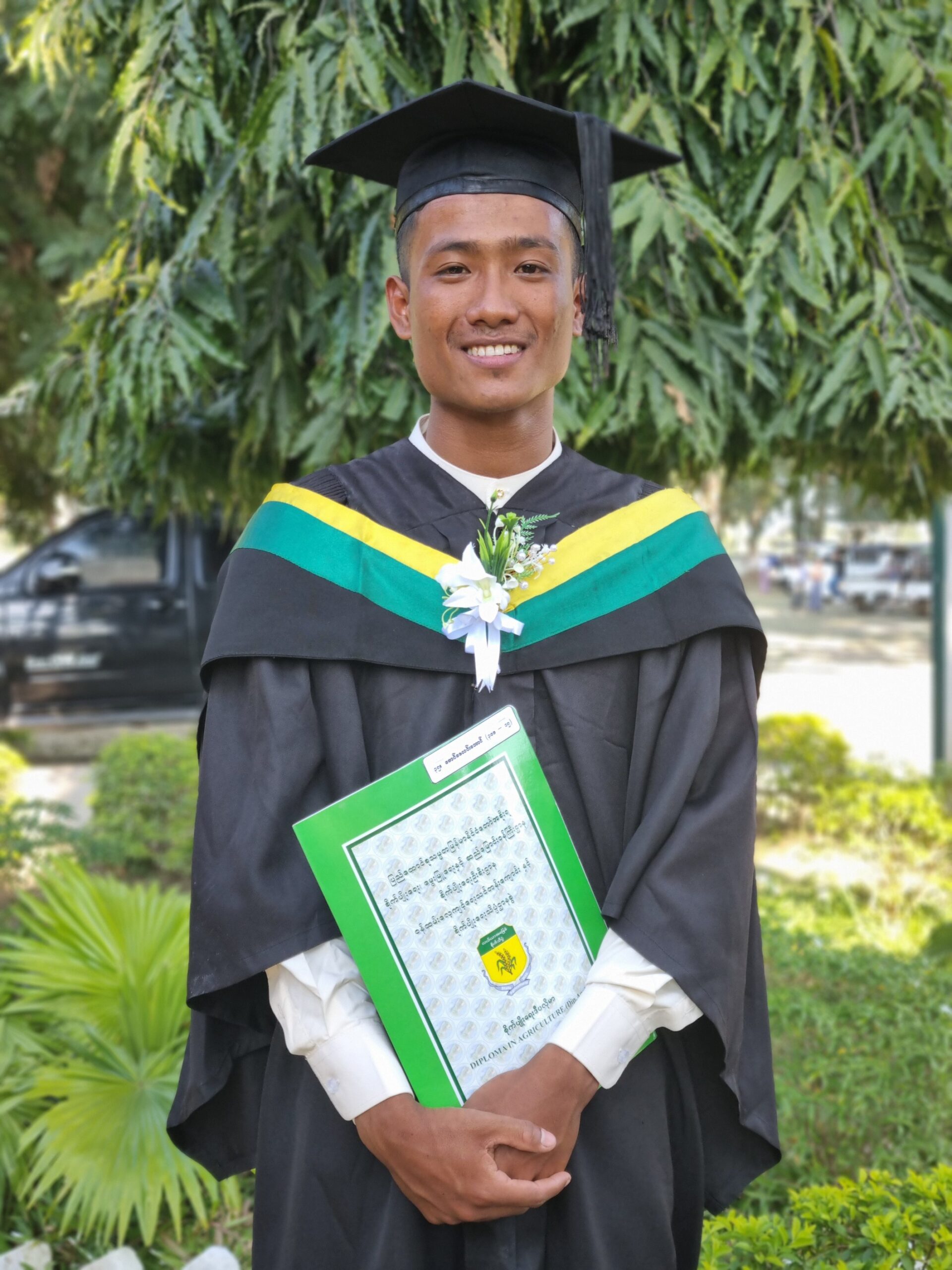
Zay Linn Aung
“After graduating, I joined Aka Yarzar, a company specializing in agricultural products. For graduates like us, job opportunities are plentiful in agricultural firms, particularly in roles involving farmer outreach and crop cultivation projects. While opportunities are available for both men and women, men often have an advantage due to travel requirements. I encourage future students to attend school regularly, follow the rules, and study diligently. The lessons learned at the institute are incredibly useful in real-life work, and job prospects are abundant for those willing to put in the effort.”
The success of these seven scholars underscores the profound impact of MPRL E&P’s CSR Program in empowering young individuals through education. This scholarship has not only enabled them to complete their studies but has also paved the way for promising careers in agriculture. As these graduates embark on their respective paths—whether in further education, local agricultural enterprises, or international careers—their journeys serve as an inspiration for future generations. Their achievements exemplify the transformative power of education and reaffirm MPRL E&P’s unwavering commitment to nurturing talent and fostering sustainable growth in Mann Field Communities.
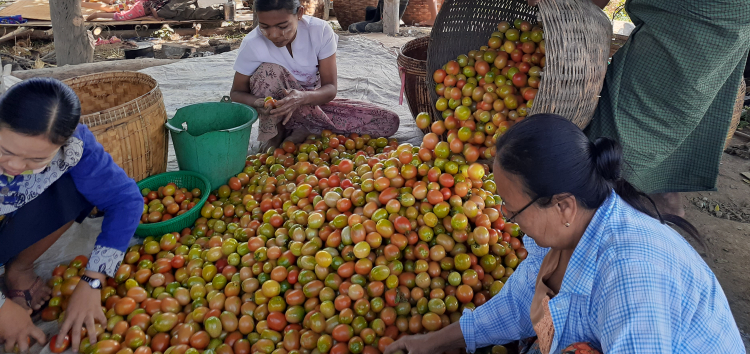
Reaping Handsome Profits from Sustainable Horticulture Practices
In this Fiscal Year 2021-2022, 18 farmers from Mann Kyoe, Kyar Kan, and Kywe Cha Villages were growing 7.25 acres of tomato with new cultivation techniques they had learned from horticulture training. Among them, tomato growers from Mann Kyoe Village revealed how much they had benefited from adopting sustainable horticulture practices at their lands as of 28th February 2022. Let’s hear how much they fetched in this harvest year!
Read moreReaping Handsome Profits from Sustainable Horticulture Practices In this Fiscal Year 2021-2022, 18 farmers from Mann Kyoe, Kyar Kan, and Kywe Cha Villages were growing 7.25 acres of tomato with new cultivation techniques they had learned from horticulture training. Among them, tomato growers from Mann Kyoe Village revealed how much they had benefited from adopting sustainable horticulture practices at their lands as of 28th February 2022. Let’s hear how much they fetched in this harvest year!
The saying “you reap what you sow!” conveys that future consequences are inevitably shaped by present actions. If a man sows well, he will reap well.
MPRL E&P, with the ultimate goal of contributing to the inclusive growth at the area where the business operates, undertakes focused interventions in agricultural management and also initiates sustainable agriculture practices at 14 surrounding villages in Mann Field. During these years since July 2019, MPRL E&P’s CSR Program has empowered horticulture farmers with sustainable farming practices by organizing horticulture training, delivering hands-on trainings on making natural fertilizer (Fish Amino Acid) and making natural pesticide, providing seeds and plastic mulch through Horticulture Farmer Committee, and facilitating for agricultural experts’ technical assistance as needed. In this Fiscal Year 2021-2022, 18 farmers from Mann Kyoe, Kyar Kan, and Kywe Cha Villages were growing 7.25 acres of tomato with new cultivation techniques they had learned from horticulture training. Among them, tomato growers from Mann Kyoe Village revealed how much they had benefited from adopting sustainable horticulture practices at their lands as of 28th February 2022. Let’s hear how much they fetched in this harvest year!
“This is my very first time sowing tomatoes using sustainable horticulture practices initiated by MPRL E&P’s CSR Program. Last year, I couldn’t sow using horticulture training techniques and so ended up trying only traditional methods, as I couldn’t afford any huge investment costs. But this year, I could grow 0.35 acres of tomato farm because the CSR Program provided necessary tomato seeds and plastic mulch to horticulture farmers like us.
I have invested a total cost of MMK 750,000 and harvested 4,500 visses as of 28th February 2022. Nearly two-thirds of the land has been harvested and until now I have gained a sale amount of MMK 8,000,000. My tomatoes are large in size and pretty in color. I am very happy with the return on investment and I would like to thank MPRL E&P for providing such knowledge and resources. I would like to kindly request this kind of support for the upcoming year as well.”
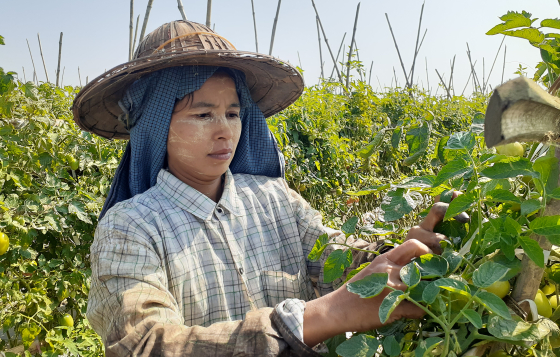
“It has been over two years that I have been growing tomatoes using modern training methods introduced and supported by MPRL E&P’s CSR Program. Currently, I am growing tomatoes on 0.55 acres of land. Although I want to grow more vegetables, I don’t have enough space to sow. The advantages of sowing tomatoes using modern techniques include awesome crop yield, more harvesting time, and longer plant life.
I am earning about MMK 7,000,000 with a total yield of 3,800 visses from my farm. Last year, the sale amount was MMK 3,200,000, and the gross profit was MMK 2,400,000. There are some crops left in the field and harvesting is still in progress. I want to thank MPRL E&P’s CSR Program for its continuous support of our agricultural needs. Because of MPRL E&P, farmers who couldn’t cultivate before can now make earnings using modern agricultural techniques. In the coming years, please continue supporting us as we look forward to implementing new practices that promote sustainable agriculture and food security. Thank you again.”
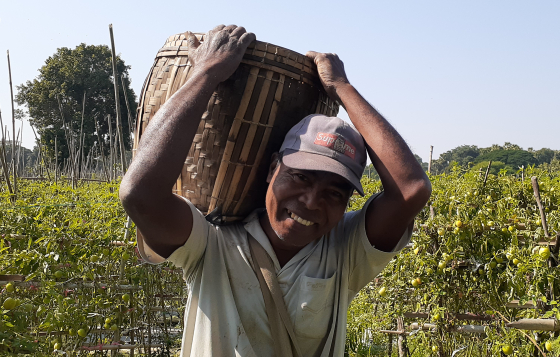
“I have 0.45 acres of farmland and I am currently growing tomatoes on this land. The systematic cultivation method provided by the MPRL E&P’s CSR program has a higher cost than the traditional one, however, it has a lesser frequency of irrigation and cheaper wedding cost. Furthermore, not many pesticides are needed due to the low disease incidence and good resistance. These days, my tomato farm is getting a sale amount of about MMK 6,300,000 with a yield amount of 3,700 visses and harvesting is still in progress.
This year, total investment cost is about MMK 570,000. But last year, a sale amount was only MMK 1,899,700 with total investment cost of MMK 300,000. This year, 10 more farmers have participated in sowing tomatoes with MPRL E&P’s modern methods after seeing our previous farming progress. I am pleased to see our neighbors sharing good agricultural practices. This is because of MPRL E&P’s great support! I wish MPRL E&P would continue to support farmers who cannot afford to cultivate with new plantation methods.”
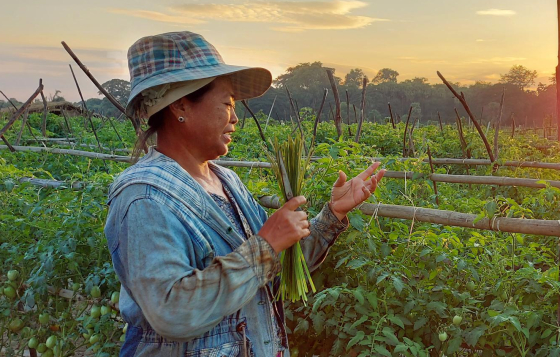
“Just like my peers, I have been cultivating tomatoes using the horticulture training method since 2019. I attended all agricultural trainings and knowledge sharing sessions conducted by MPRL E&P’s CSR Program and apply that newly acquired knowledge when I work on my farm. My tomato farm is 0.45 acres wide and I have plans to expand it. I am getting a sale amount of MMK 5,000,000 with a yield amount of 3,300 visses and harvesting is still in progress. This year, I invested a total amount of MMK 850,000 in this farmland while last year was it was about MMK 800,000.
Furthermore, I noticed that our community farmers prefer to use Fish Amino Acid, the fertilizer that we learned to produce on our own. It is useful for us as it helps produce better quality and healthy crops. Besides, it is more affordable than other chemical fertilizers and is much safer to use. Because of MPRL E&P’s benevolence and training sessions, most of us are now cultivating more and at the same time, our livelihoods are getting better. Special thanks to the Company and its generous support to our farming community!”
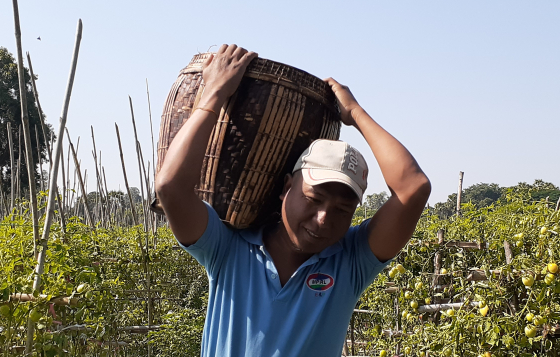
How pleasing it is to find out about each and every farmer’s acknowledgment of the agricultural development initiatives conducted by MPRL E&P’s CSR Program and their success stories! We believe everything that happens is a result of things that we have done in the past. We reap what we sow.
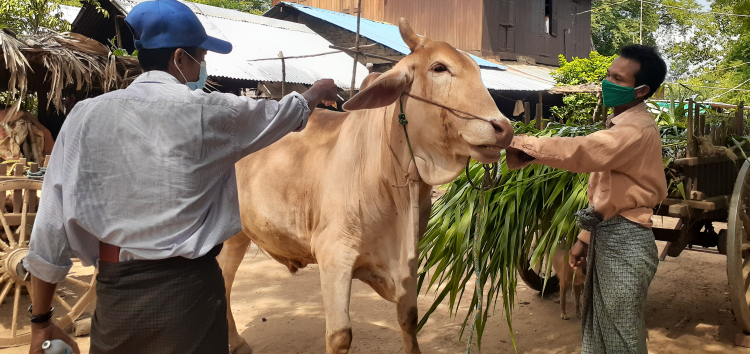
Healthy Animals, Happy Communities!
This is a photo essay on the livestock development initiative that is about promoting animal husbandry and healthcare knowledge in Mann Field Communities.
Read moreHealthy Animals, Happy Communities! This is a photo essay on the livestock development initiative that is about promoting animal husbandry and healthcare knowledge in Mann Field Communities.
While agriculture is the main strength of Myanmar’s economy, livestock farming is also a key contributor. In other words, after agriculture, livestock farming, one of the oldest economic activities of man, is the second most important sector in the country’s agriculture-based economy. It plays a significant role in rural livelihoods, especially since farmers raise farm animals for both food and labor purposes. It is one of the pillars of a sustainable food system and a major contributor to poverty reduction, food security, and agricultural development of the country.
Animal husbandry deals with day-to-day care, breeding, and raising of livestock like cows, buffaloes, horses, pigs, goats, and sheep that are useful for humans and important for the livelihoods of the farmers. To maintain sustainable development of livelihoods, farmers are responsible for the care and management of livestock, including the protection of animals against diseases. Just like any human health issue, prevention is better than cure.
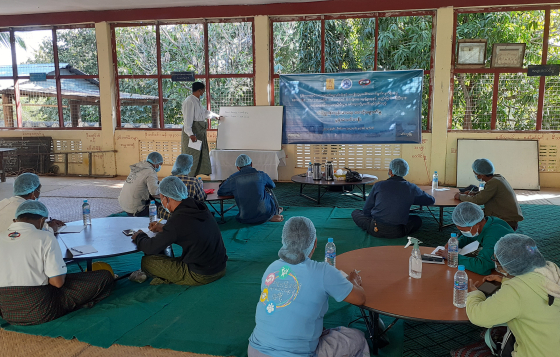
Most communities around Mann Field make a living from agricultural and livestock production. MPRL E&P is committed to improving the lives of the communities around Mann Field where we operate, and also helping these communities achieve their self-reliance. Therefore, MPRL E&P’s CSR & Communications Department strives to increase opportunities for the sustainable development of the communities through strategic investments.
The CSR & Communications Department has conducted engagement meetings with the community stakeholders to identify their needs and create solutions for shared values. Through regular stakeholder engagement and needs assessment meetings, community investment initiatives are developed, one example being the “Launching Livestock Development Initiative”. We have implemented this important initiative by collaborating with the Livestock Breeding and Veterinary Department (LBVD – Minbu). This strategic partnership between the company and the government agency has enhanced livestock sector development in 14 surrounding villages around Mann Field.
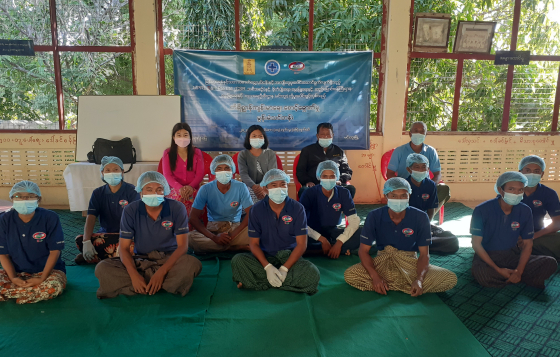
MPRL E&P has promoted knowledge sharing and practices on animal husbandry and healthcare in Mann Field Communities by conducting subject-matter-related sessions: seven-day session on basic knowledge sharing in March 2020, three-day training on basic knowledge in December 2020, and three-day training on advanced knowledge in December 2021.
The sessions covered a total of 238 community farmers and helped them improve livestock raising and caring practices for long-term farming development. The training programs enhanced livestock breeders’ knowledge of animal selection, weight calculation, healthcare, artificial insemination, medication, nutrition, vaccination food security, and food safety. Not to mention, preventing diseases in farm animals can positively impact the economy and can secure a safe and nutritious food supply.
It is not wrong to say “Prevention is better than cure!”
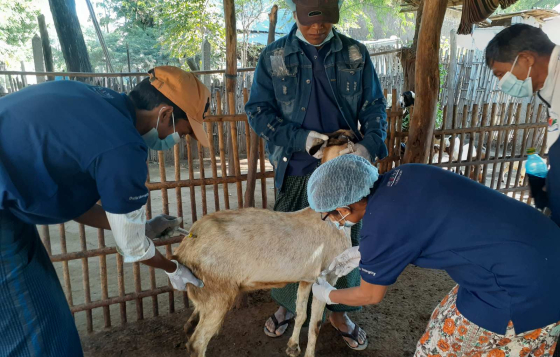
It is also important that farm animals have good nutrition and suitable vaccination and to ensure this, MPRL E&P’s CSR Field Team focused on delivering necessary resources and support between the community and LBVD (Minbu) as the main facilitator.
The CSR Field Team would contact the LBVD (Minbu) officers in person or over the phone to discuss community needs for their livestock’s nutrition and vaccination. The Team would also organize meetings for treatment instruction, collecting farm animal lists, distributing vaccines to cure Newcastle disease in poultry and Blackleg disease in cattle, and lastly, delivering Napier grass provided by LBVD (Minbu) for animal nutrition.
It is obvious that facilitation is important in every sector to build a better future in the community.
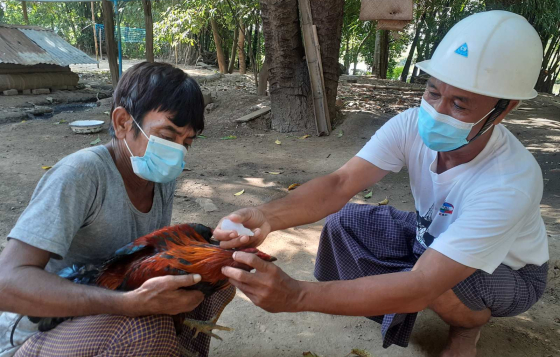
To ensure continuous improvements, we would track progress and conduct review or evaluation meetings with beneficiary stakeholders.
As of 28th February 2022, a total number of 3,202 poultry and 1,500 cattle have received vaccination under the collaborative support of the company and the LBVD (Minbu).
Besides, Napier grass cultivation, which has been implemented as the pilot program for animal food security in the community, has been recorded with positive feedback and good results from farm owners.
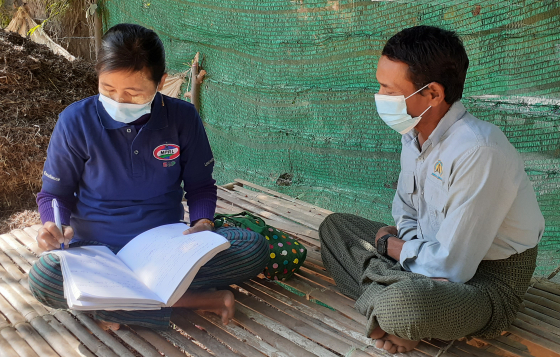
Animal health is just as important as human health, especially in rural communities where livestock farming plays a key role in the local economy and sustainable livelihoods of the community. Animal diseases must be prevented as they have a huge impact on securing a safe, nutritious, and sufficient food supply. We must further invest in tools like vaccination and nutrition so that we can continually improve animal husbandry and livestock farming.
Considering the above all, it can see that MPRL E&P would make every effort to improve good husbandry practices in Mann Field Communities with the sustainable livelihoods goals.
Keeping animals healthy keeps communities vibrant and happy!
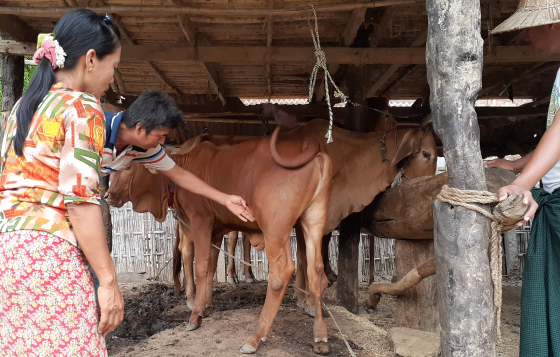
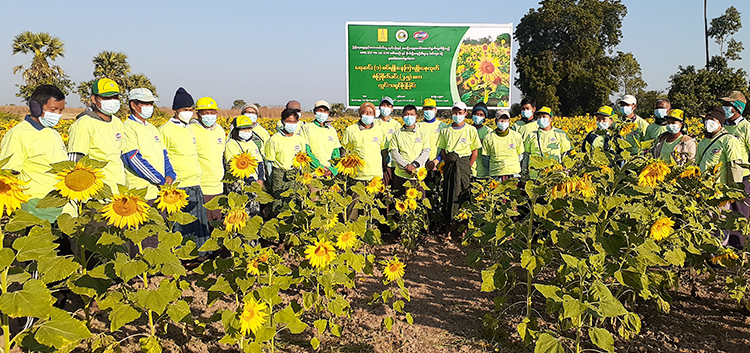
When Sunflowers Face Eastward
The following is a photo essay on the sunflower seed production initiative which is about farming with nature in Mann Field.
Read moreWhen Sunflowers Face Eastward The following is a photo essay on the sunflower seed production initiative which is about farming with nature in Mann Field.
Sunflower is a pollinator-dependent crop, which is extensively cultivated worldwide for oil production.
It is an important source of food for human health through the consumption of sunflower oil which is considered a premium quality oil containing vitamin E and unsaturated fatty acids.
Sunflower seed production is one of the three focused areas of the Farmer Field School mounted by MPRL E&P’s CSR Program in collaboration with the Department of Agriculture (Minbu) starting from April 2021 to support smallholder farmers in developing quality and climate-resilient seeds.

Some of the agronomical practices in sunflower cultivation include a selection of well-drained and fertile land with no previous history of growing sunflower, applying balanced and adequate nutrition including irrigation, and having beehives near the field. Many of us find it fun to watch as the plants face the morning sun in the east when the flowers open.
As its anatomy says, the head of the sunflower is not just a single flower but rather an array of flowers within the flower. The outer bright yellow petals known as the ray florets, along with the lovely smell of the nectar warmed by the sun in the east, draw bees into the large brown center disc, which contains dozens of small flowers called disc florets, each of which with the ability to produce seed. It is where pollination, one of the most fascinating processes in the natural world, happens.

The 2.5-acre pilot sunflower seed production farm by Community Volunteer U Thein Naing from Kywe Cha Village uses a hybrid seed variety locally developed at a farm in Nay Pyi Taw – Tat Kone, and extension staff from the Department of Agriculture (Minbu) brought a total of 20 farmers from five villages on board an on-farm demonstration on human facilitated pollination in late December 2021. The demonstration on the pilot farm involves touching the pollen from a male flower with a gentle paintbrush and carrying it to the female flowers.
Production of hybrid sunflower seeds requires planting male and female lines in the same fields, usually alternating with four rows of females and two rows of males. In this regard, mediated pollination is essential for transferring pollen from a male plant to a female plant and this movement of pollen allows the plant to reproduce and to exchange genetic information with other plants. Human mediated pollination should be completed within five days and a successful harvest can follow in the next twenty to thirty days.
Upon harvest, seeds from the male rows can be utilized to produce cooking oil while seeds from the female rows will become seeds for the next growing season, clean and dried thoroughly in the sun and applied with fungicides before storing in line with advice and instructions from the Department of Agriculture (Minbu). Normally, a sunflower completes its life cycle within 80 to 85 days in total.

Through the open and systematic cultivation of the oilseed sunflower, we can ensure farmers can trust its authenticity, quality, affordability, region suitability, high yield, high oil production, ability to withstand local weather and pests, and more uniformity by looking at plant height and flower size. If the seeds produced are successful, quality tests and certification need to be completed.
For this very first initiative, we anticipate some shortcomings such as lower yield than expected due to weather conditions and farming techniques, which can be eliminated over time through continuous learning and improvements.

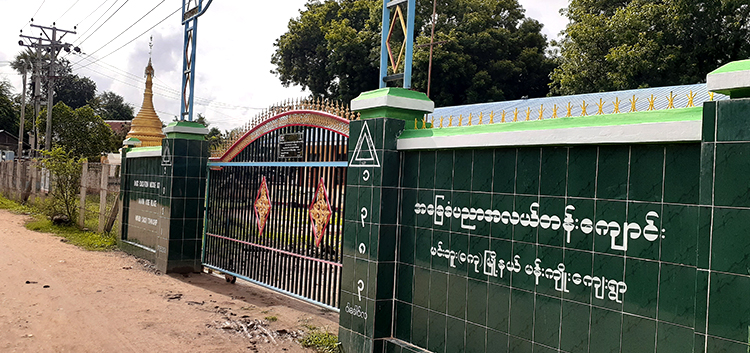
School Renovation and Supplies Schools are the heart of a town, ward, or village.
They are of essential value in today’s world, especially in disadvantaged communities. The partnership between diverse stakeholders and community leaders can make a huge difference in the community because they can reinforce positive attitudes towards education.
In addition, the support from these stakeholders will ensure that the children in these communities receive proper education, and at the same time, prepare them to transition into adulthood.
Ensuring schools are equipped with safe water, sanitation facilities, and equipment to meet the basic needs of children is a good starting point and requires a consistent and inclusive effort.

According to UNICEF (Myanmar), a lack of functioning WASH (water, sanitation, and hygiene) facilities in schools can result in lower child attendance and achievement.
For instance, community schools in Mann Field depend on water from Mann creek as their primary source, of which turbidity is high, making it unsuitable for everyday drinking.
Seeing there is a need in these disadvantaged communities, MPRL E&P prioritizes supporting water, sanitation, and hygiene facilities in schools by putting in place water filtration units and hand-washing stations coupled with information sessions on the water, sanitation, and waste management for school children, an initiative that began in 2016.

A total of 11 public schools—one high school and the rest middle and primary schools—are located in the 14 surrounding villages in Mann Field. MPRL E&P’s CSR Program supports these schools on a needs basis, some of which reflect underinvestment and rural-urban disparities.
In this regard, MPRL E&P’s CSR Program dedicates a portion of an annual infrastructural budget for school renovation and supply projects—both major and minor ones.
Furthermore, carrying out specific school projects make the community schools safer and stronger. These projects include school fencing and school gate construction as well as old school restoration and renovation, which are implemened by sourcing building materials and equipment locally to support the region’s economy.

Gauging the conditions of community schools and understanding the risks they pose to young learners together with community leaders and school officials is part of the restoration and renovation process.
Then one can decide whether to restore or to renovate the buildings. On the cards are two school restoration projects in Kyar Kan Village and Lay Eain Tan Village.
With an objective to warrant a sense of participation and ownership regarding the major renovation projects, the CSR Program welcomes a small percentage of financial and labor contributions by the community in these school-related projects.

Meanwhile, investing in appropriate classroom interior design is essential in enhancing the overall learning experience for the children. The CSR Program hires a local artist to create wall paintings in the Auk Kyaung Kindergarten classroom, which has been the most expensive renovation project up to now.
Adequate school furniture plays a critical role, in combination with textbooks and teachers, in creating a conducive learning environment.
Based on requests by school officials, the CSR Program delivers school supplies including benches and desks, as well as cabinets, bookshelves, and glass cupboards for teachers’ rooms as part of our minor school projects.

Under the discussion is a plan to work with school teachers and relevant organizations to initiate two school-based pilot projects, namely ‘Green Schoolyard’ and ‘Bokashi School Composting’, with an emphasis on environmental sustainability that will facilitate extracurricular learning of school children and make schools more sustainable in the long run.
The pandemic has rendered schools across the country empty. However, schools will soon be reopening their doors to welcome students back under careful safeguards as soon as coronavirus restrictions are dropped.
What lies ahead will be an enjoyable learning journey for children who have been away from their studies for a while.
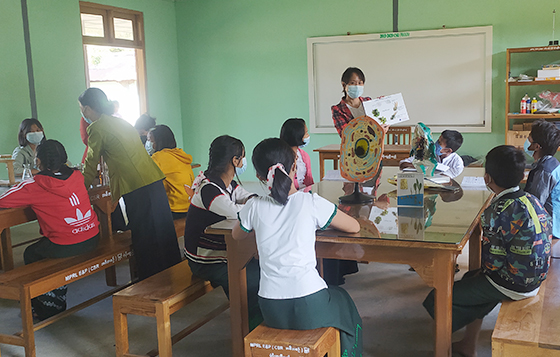
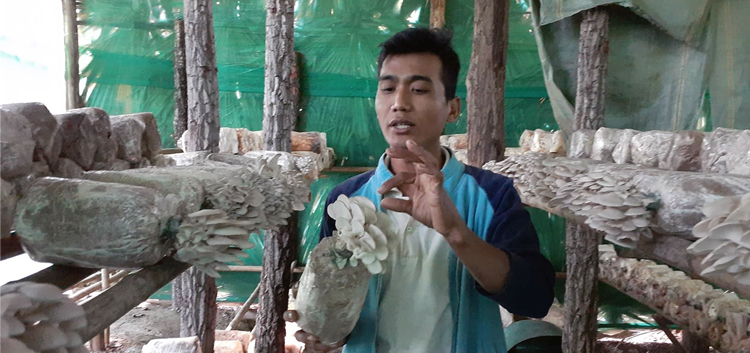
Seeing is Believing: Community Volunteer Pilots a Mushroom Model Farm
Ko Nay Zaw is a 35-year-old Community Volunteer representing Chin Taung Village in Mann Field. As a Community Volunteer, he is involved in implementation of a wide range of CSR initiatives by MPRL E&P to support community livelihood development.
Read moreSeeing is Believing: Community Volunteer Pilots a Mushroom Model Farm Ko Nay Zaw is a 35-year-old Community Volunteer representing Chin Taung Village in Mann Field. As a Community Volunteer, he is involved in implementation of a wide range of CSR initiatives by MPRL E&P to support community livelihood development.
After attending a hands-on training on mushroom cultivation organized by MPRL E&P’s CSR Program in August 2019 in Mann Field, Ko Nay Zaw decided to apply his newly acquired skills at once.
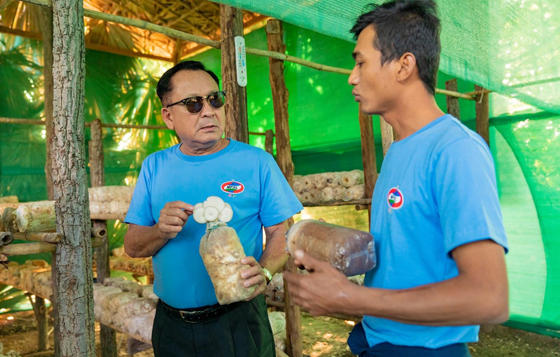
Ko Nay Zaw said confidently that cultivating popular mushrooms can help generate a daily income and big profits in a few weeks. Starting a mushroom farming business is fairly easy too with a slim start-up cost and a high return on investment.
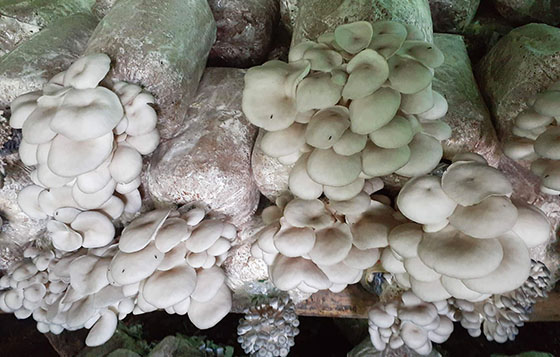
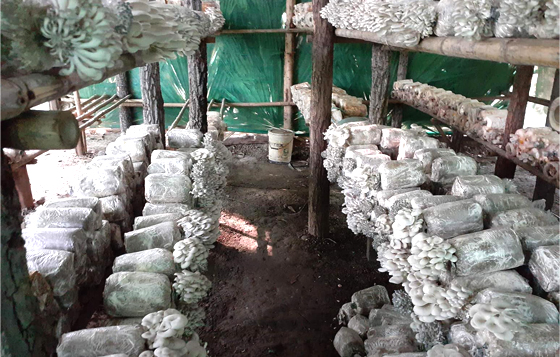
As intended at the commencement, Ko Nay Zaw has reached out to fellow farmers interested in his mushroom model farm by imparting his experience and knowledge, answering questions patiently and at length. “A farmer from Kyauk Tan Village nearby came to study my model farm and he started to grow his own mushrooms commercially. I explained how to build a growing house, how to water the mushrooms and how the mushroom market is. I believe more people in the area will start to follow my path as a result of these efforts over time and it will be our achievement,” said Ko Nay Zaw.
Moving forward, Ko Nay Zaw entertains the idea of growing a value-added mushroom farming business covering its supply chain. He is determined to deepen his experience and knowledge on the mushroom cultivation so as to ensure it becomes more profitable in the long run. He concluded, “Mushroom farming can be a home business that our community households can manage on their own. Mushrooms are also a sustainable food on our table as it is grown with organic waste. So I would like to express my thanks to the company and its CSR Program here for the supports given to me in the model farm project.”
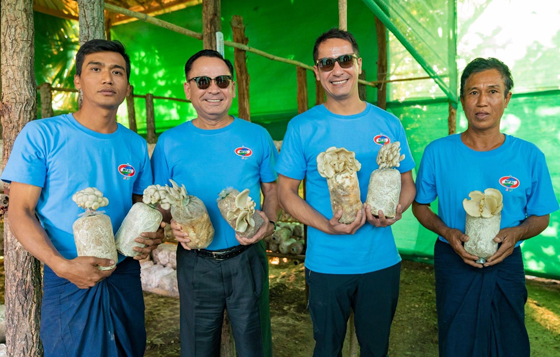
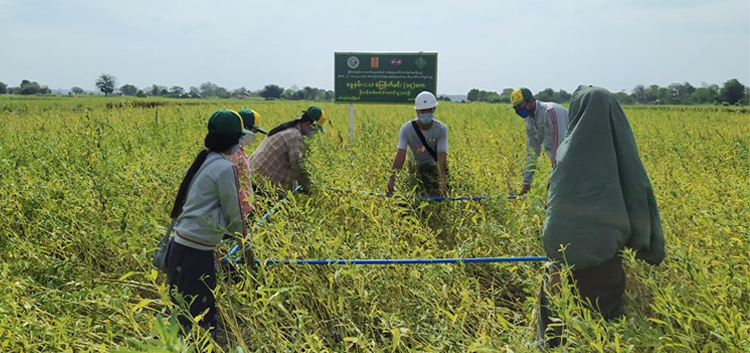
Telling a New Story with Agriculture: GAP Sesame in Mann Field
Village Administrator U Win Zaw from Lay Eain Tan Village, one of the surrounding communities in Mann Field and a hotspot of MPRL E&P’s agricultural initiative, was excited as he saw his fellow villagers preparing the land to grow the region’s most popular and promising crop: sesame.
Read moreTelling a New Story with Agriculture: GAP Sesame in Mann Field Village Administrator U Win Zaw from Lay Eain Tan Village, one of the surrounding communities in Mann Field and a hotspot of MPRL E&P’s agricultural initiative, was excited as he saw his fellow villagers preparing the land to grow the region’s most popular and promising crop: sesame.
Sesame is a cash crop grown throughout the year in Magway, Mandalay and Sagaing regions in Myanmar for food-related consumption and oil production. It is also one of Myanmar’s commodities exported to the EU, Japan, South Korea, and China.
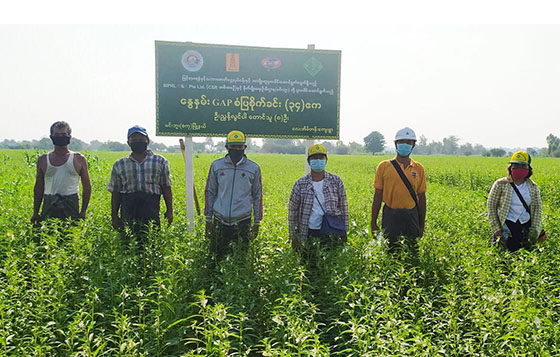
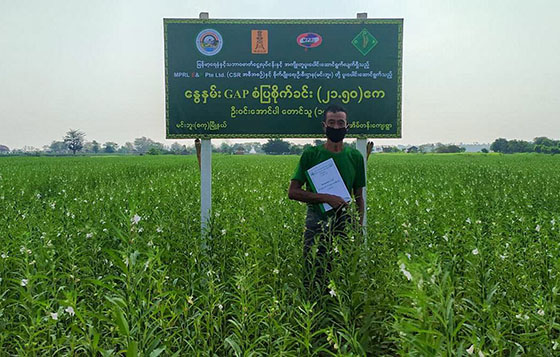
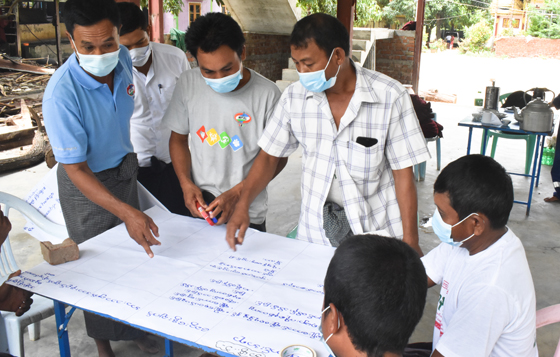
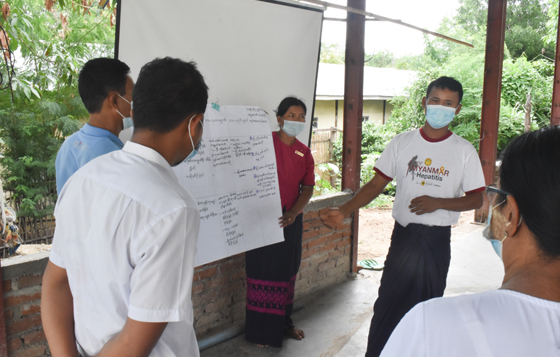
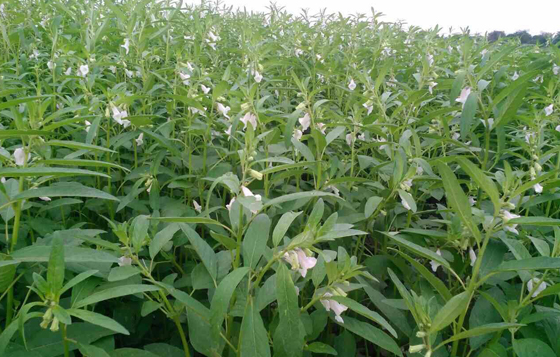
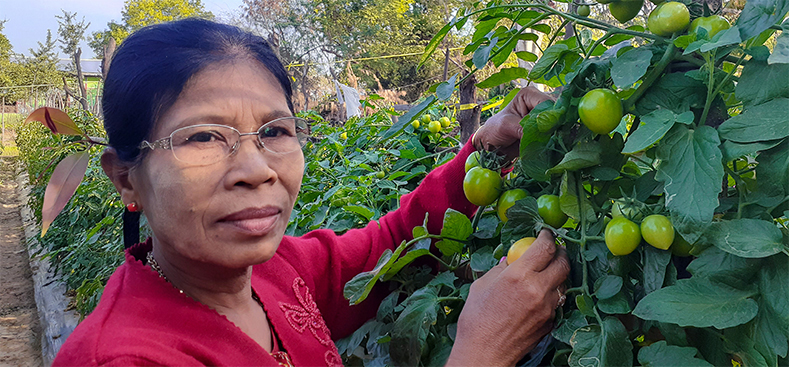
Empowering Community Smallholders for Sustainable Agriculture
There are two major issues for many smallholder farmers in Mann Field on which MPRL E&P’s agricultural initiatives have been focusing : they are struggling with access and availability of quality seeds whilst their traditional practice of broadcasting seeds or random transplanting prove both costly and low-yield, like some of their counterparts in other areas of the country in which agriculture is the backbone of the economy.
Read moreEmpowering Community Smallholders for Sustainable Agriculture There are two major issues for many smallholder farmers in Mann Field on which MPRL E&P’s agricultural initiatives have been focusing : they are struggling with access and availability of quality seeds whilst their traditional practice of broadcasting seeds or random transplanting prove both costly and low-yield, like some of their counterparts in other areas of the country in which agriculture is the backbone of the economy.
Quality seeds key to successful crop production
The low-quality seed problem is suggested to be rooted in improper storage methods which leads to damage and losses, with most of the smallholders in Mann Field barely able to save enough seeds from one harvest to another growing season. As a result, when growing season comes, they have to buy seeds at double the price, which increases their input cost.
MPRL E&P’s Livelihood Development Program introduced in the fiscal year 2018-2019 the idea of seed loaning with a 25% interest per seed bag for chickpeas and 1 tin (16 Pyi) for every 3 kg of sunflower seeds loaned to these farmers. This allows them to have access to quality seeds at zero cost while MPRL E&P can extend the access as the amount of quality seeds multiplies after each harvest.
With the technical support of the Department of Agriculture (Minbu), the seed loaning initiative now covers Chickpea and Sunflower growers from all the 14 surrounding communities. Based on the success rate, a seed bank that is run by farmers themselves will be set up to grow seed collection and increase varieties in coming months.
Horticulture for Vegetable Growers
Daw San May, a 61-year-old vegetable farmer from Kyar Kan Village, explained, “I used the traditional method of broadcast seeding to grow tomatoes. As a result, the plants grew unevenly in my pocket of land, and there were other challenges such as high labor costs associated with clearing weeds, labor scarcity, and heavy rainfall.”
Her experience was echoed by U Aung San Myint, a farmer from Man Gyo Village, who said he applied the same method to grow tomatoes and the cost to clear weeds from the plantation was as much as 6 lakhs, no meager amount.
Both of these farmers attended a MPRL E&P-supported two-day Horticulture training in July 2019 by a certified technician from the East-West Seed, an award-winning organization serving farmers. While some of you may be familiar what horticulture is, this hands-on training on horticulture for a group of 41 attending smallholders underscored modern science-based techniques on growing high-value tomatoes and chilies with optimized yields and sustainability of local ecosystems.
Putting their newly-acquired knowledge to use, both have seen the use of plastic mulch or plasticulture leads to a reduction in input cost as well as effects of changes in temperature, rainfall and wind to the crops. Daw San May said, “The black color of the planting beds absorbs perspirations, and therefore, the irrigation time is reduced from once in a week to once in ten days. Even when it rains, the planting beds would not collapse, and the roots do not become rotten.”
U Aung San Myint added, “While the cost to set up the plastic mulch is just over MMK 60,000, the cost to clear weeds from the plantation with herbicides has been reduced to one tenth.” He even has observed that weeds no longer grow in the area where the plastic mulch has been set down, and as the method likens organic farming, he believes the vegetables produced will be good for human health.
Daw San May said currently her return on investment is between 7 lakhs to 10 lakhs after capitalizing 3 lakhs while U Aung Say Myint disclosed the total expenditures for the farm was 7 lakhs and he has already earned over 30 lakhs in return. Both are hopeful—Daw San May will grow a full acre of tomatoes next season and U Aung Say Myint expects another 5 lakhs in coming month.
Unlocking the Potential of Smallholders
Studies indicate there are many diverse environmental impacts from unsustainable agricultural practices, including deforestation, soil degradation and greenhouse gas emissions. The Food and Agriculture Organization (FAO) said that one of the paths toward sustainable food and nutrition security for all human beings on earth is through the local production systems in which smallholder farmers play an important role through their subsistence farming. No doubt by championing these local farmers with eco-friendly agricultural techniques, lasting change towards their livelihoods and the environment will come into being.
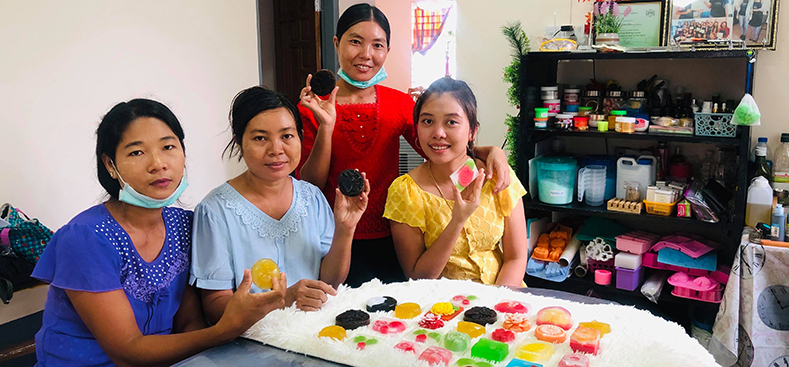
Soap is Hope
For many people, soap is a very basic hygienic product used to clean dishes, to wash hands and clothes, and to bathe on a daily basis. But what does it mean to the people who produce it? Let’s find out about the three soap-making entrepreneurs in Mann Field, who are all women!
Read moreSoap is Hope For many people, soap is a very basic hygienic product used to clean dishes, to wash hands and clothes, and to bathe on a daily basis. But what does it mean to the people who produce it? Let’s find out about the three soap-making entrepreneurs in Mann Field, who are all women!
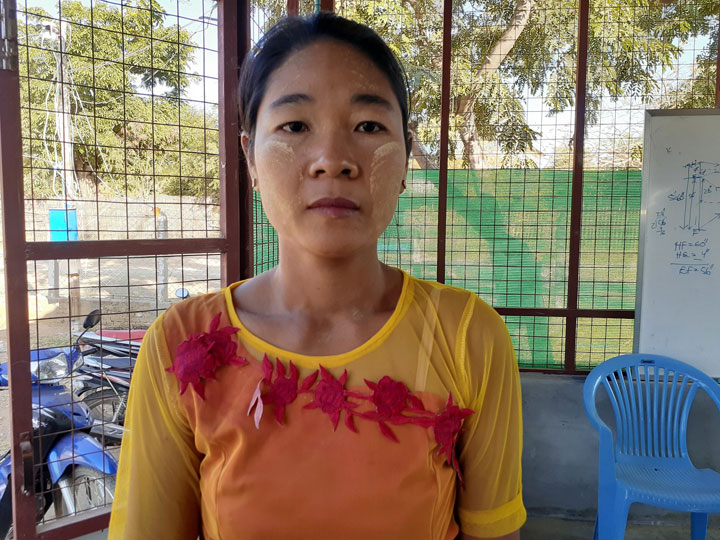
The soap-maker continued, “As we work as a group, we do bookkeeping carefully. Now we share the upfront costs, and use one of our houses as a workstation. We produce five types of soap bars named “May Nant Thar”, and a soap bar can cost between MMK 2,500 and 3,000.” Daw Myint Myint Khaing expressed her satisfaction with the progress she has made so far with her soap making business. “As I am now having my own income, I do not have to worry about fulfilling my household needs. In the future, I will focus both on my own business and the group business. We have identified new shops where our products will be displayed, and we also are making home deliveries. So we expect our customer base will grow over time.”
Then she joined the intensive professional soap-making training in Pyay in August this year. She said she has gained both new knowledge and new business contacts through the training in order to help her business grow in the future.
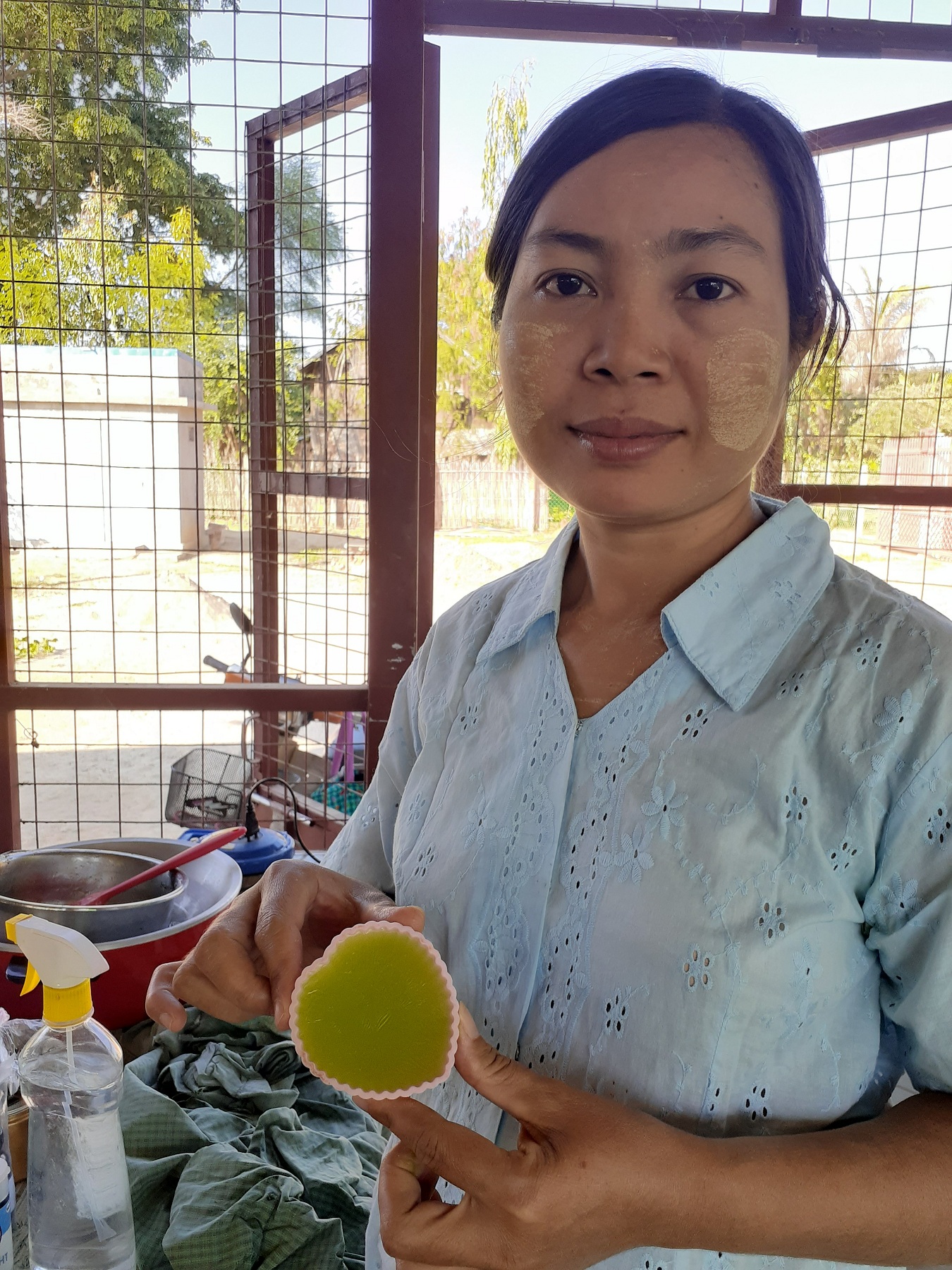
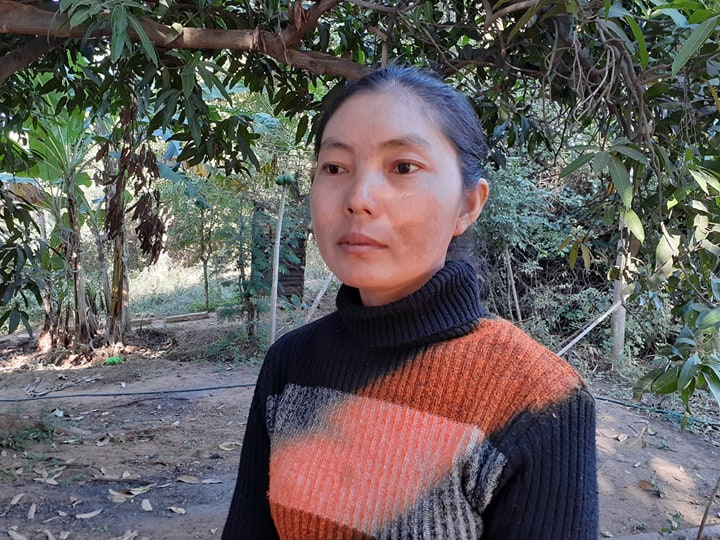
Daw Ohnmar Than from Kwe Cha Village started producing detergent soaps called “Ohnmar Myint Moh” as a home business in addition to her agricultural work. She sells it mainly in her village, but she intends to extend it to nearby villages and at retailers by offering commissions.
“When I attended the professional soap-making training in Pyay, provided by Charcoal Natural Soap-Making, arranged by MPRL E&P’s CSR Program in Mann Field, together with Daw Khin Thuzar and Daw Myint Myint Khaing, I learned new techniques which are different from the first training. There are two types of soap-making techniques: hot process and cold process. The latter was what I learned during the advanced training, and it is less time-consuming to produce and sell. You can see the difference through the bathing experience, as well as their prices. We can also be more creative in the cold process soap making,” said Daw Ohnmar Than.
The 34-year-old is grateful to receive close assistance from MPRL E&P’s Vocational Training Support Program, which includes organizing trainings, procuring raw materials, and linking market opportunities. “We are very happy to receive such support from MPRL E&P. Initially we were worried that the prices of our products were a little bit higher than local products. However, we have managed it.” In the future, she intends to discuss securing quality supplies for products with her group. As the income from her home business enables her to support her family, she hopes to do it for the long-term, hopes to improve the quality of her products.
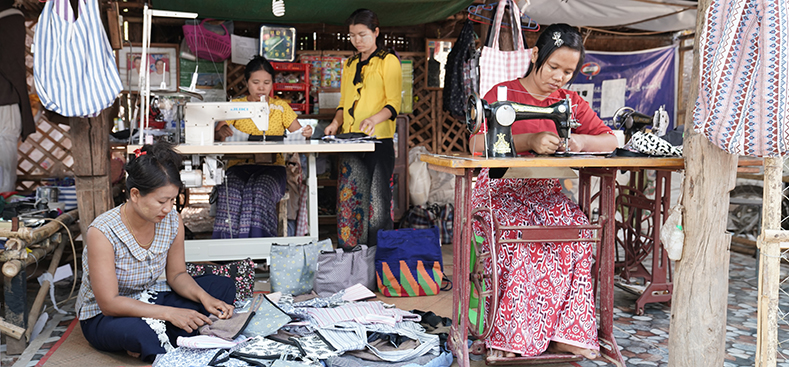
The Story of a 4-Women’s Sewing Cooperative in Mann Field
One of the strategic objectives of the CSR program of MPRL E&P is to open doors for economic empowerment for the women in the communities in Mann Field through the provision of a series of vocational skills trainings starting from the fiscal year 2017-2018 onwards.
Meet the four women to learn more about their backgrounds, how they operate the cooperative and what impact it has on their lives.
Read moreThe Story of a 4-Women’s Sewing Cooperative in Mann Field One of the strategic objectives of the CSR program of MPRL E&P is to open doors for economic empowerment for the women in the communities in Mann Field through the provision of a series of vocational skills trainings starting from the fiscal year 2017-2018 onwards.
Meet the four women to learn more about their backgrounds, how they operate the cooperative and what impact it has on their lives.
Ma Kyi Kyi Myaing is a 27-year-old resident of Kyar Kan Village, one of the surrounding communities in Mann Field. She is currently serving as a Community Volunteer for the implementation of MPRL E&P’s CSR programs in Kyar Kan Village. While she recruited other women from her village who were interested in joining the vocational training on cotton bag making skills, she herself took part in the lessons. Then people said they liked the bags she made and she started to receive orders which she fulfills by participating in this sewing group.
Ma Kyi Kyi Myaing said, “I am inspired to expand our business by marketing our products at the local shops such school uniform shops. I aim to work together with the Nammadar Women’s Cooperative Sewing Group for the long term while performing my responsibilities as a Community Volunteer.”
She is hoping to save some of her earnings to invest in the future education of her son who has started attending the local school.
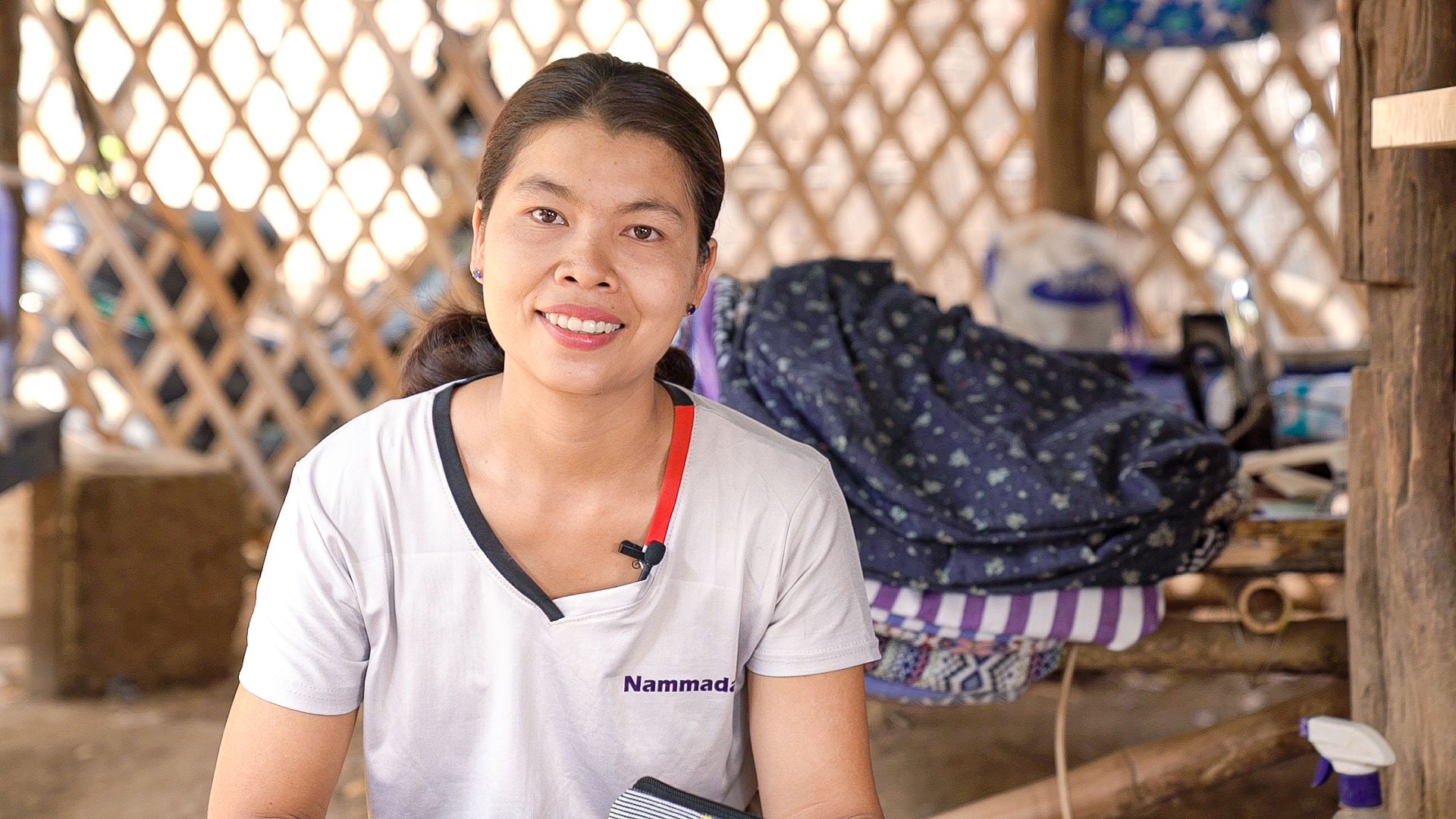
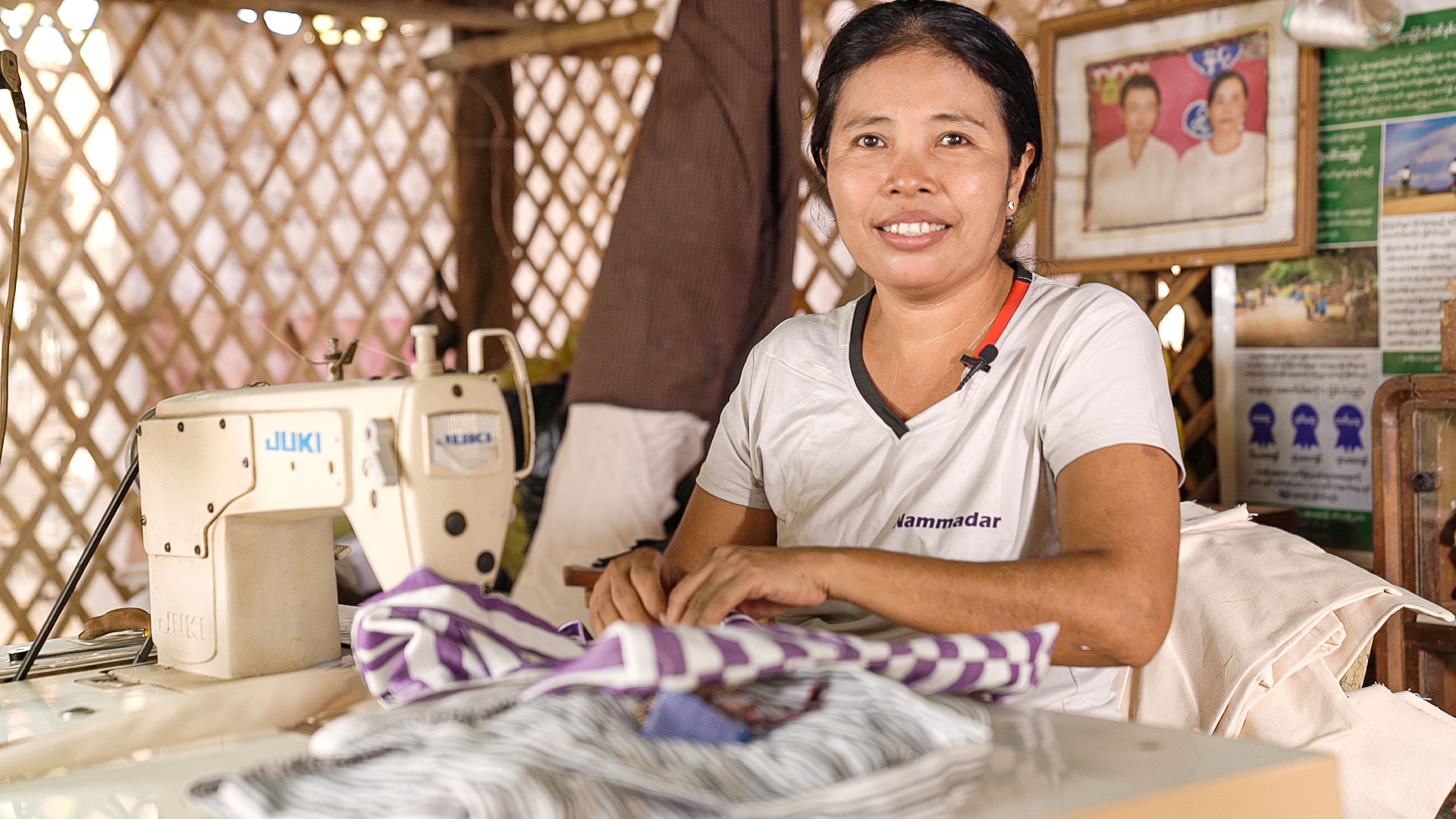
Sitting in the middle of the sewing room which is a Kaleidoscope of colourful textiles, samples, threads and other necessary sewing items, Ma Kyu Kyu Win reflected, “The success of our cooperative depends on our organizational spirit. We have created rules since our establishment and we allocate profit among ourselves according to these rules. Personally, I am able to sew different patterns of bags. I now have many new customers and business contacts too. What I would like to request from MPRL E&P is to provide more training on designs. This will assist us tremendously in the future for the creation and marketing of our products.”
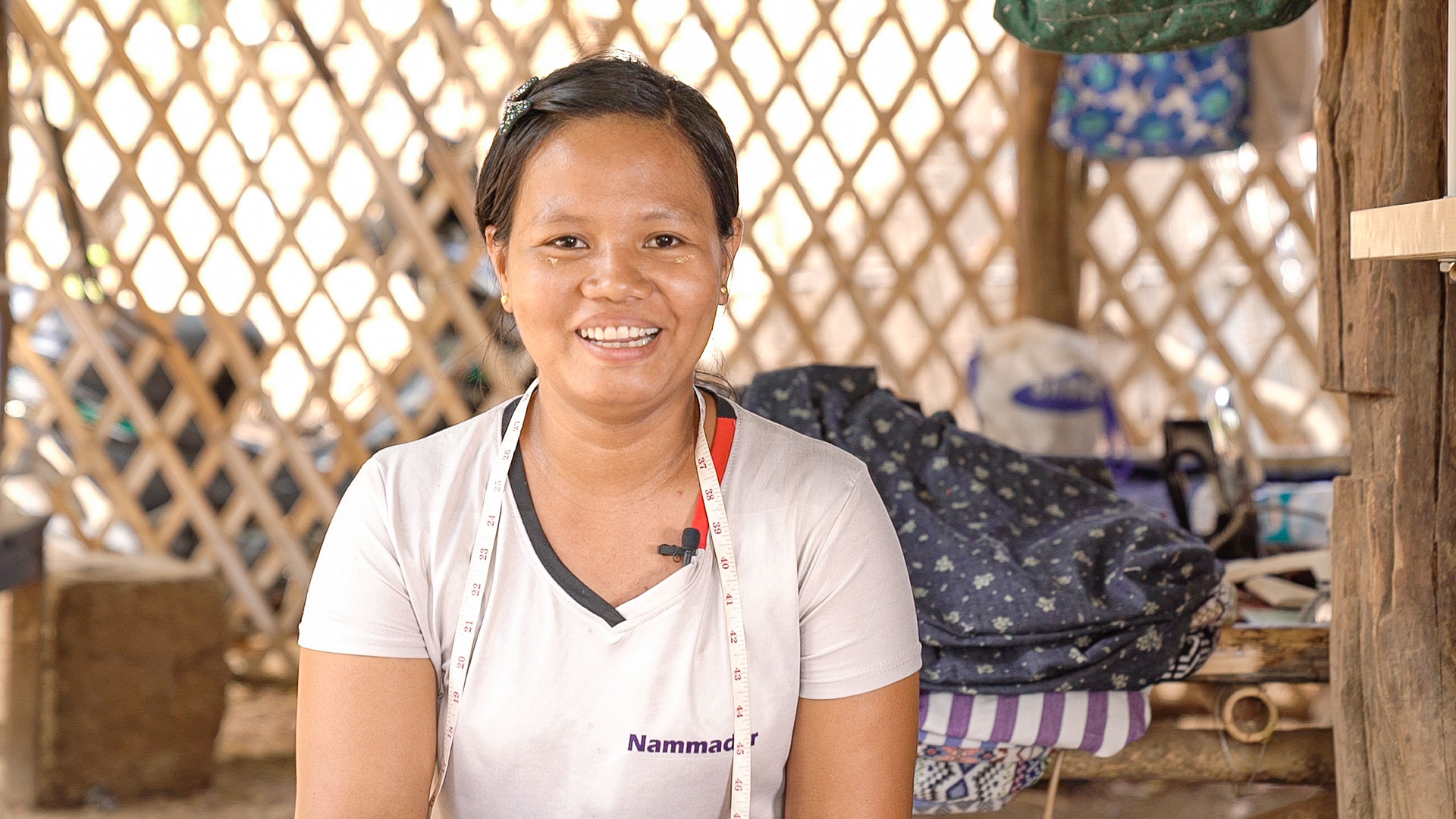
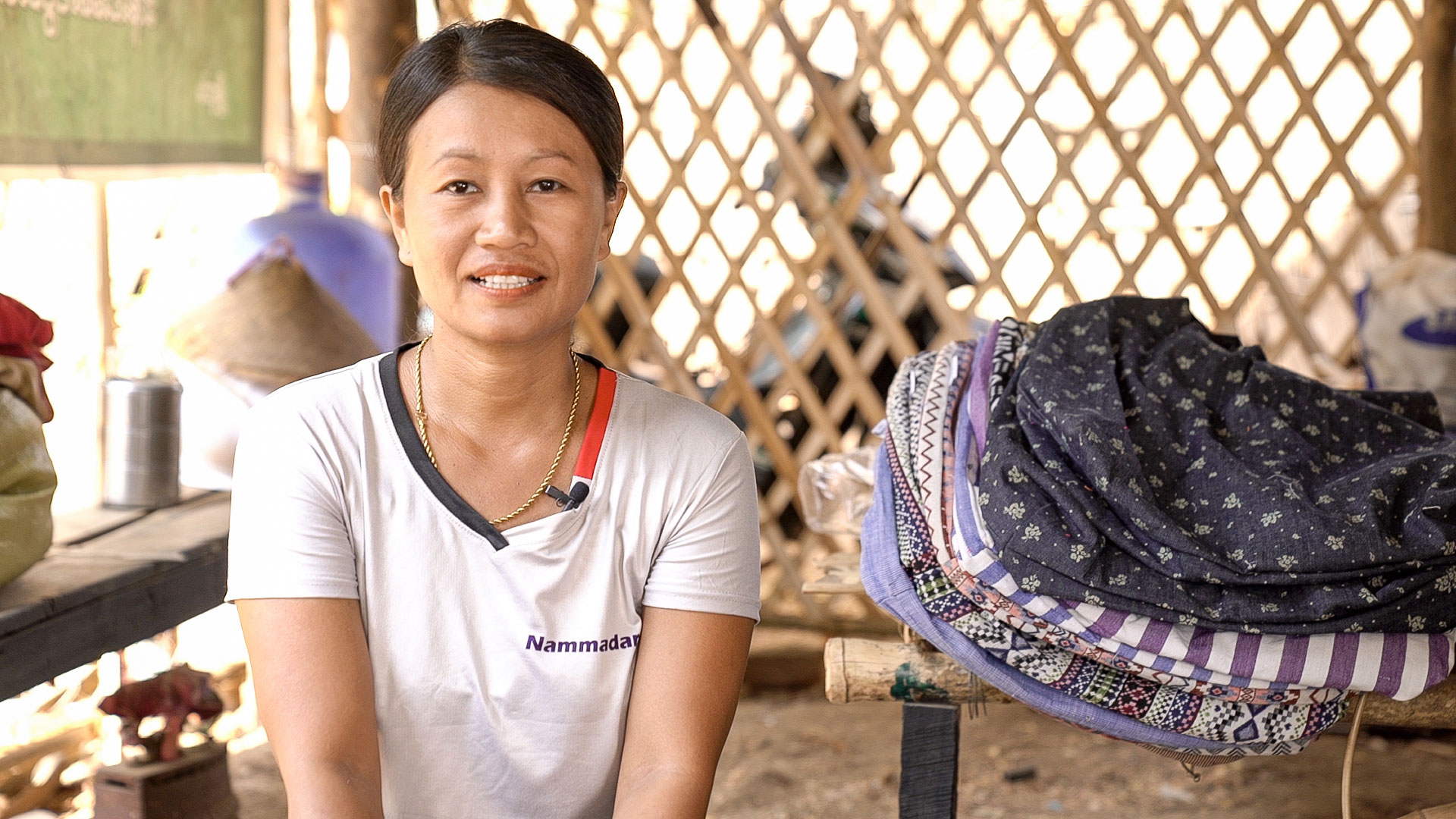
With regard to her future plans of expanding the business, she hopes to receive additional support from the CSR program of MPRL E&P in Mann Field that will strengthen her business knowledge and pattern skills to master the textile arts.
